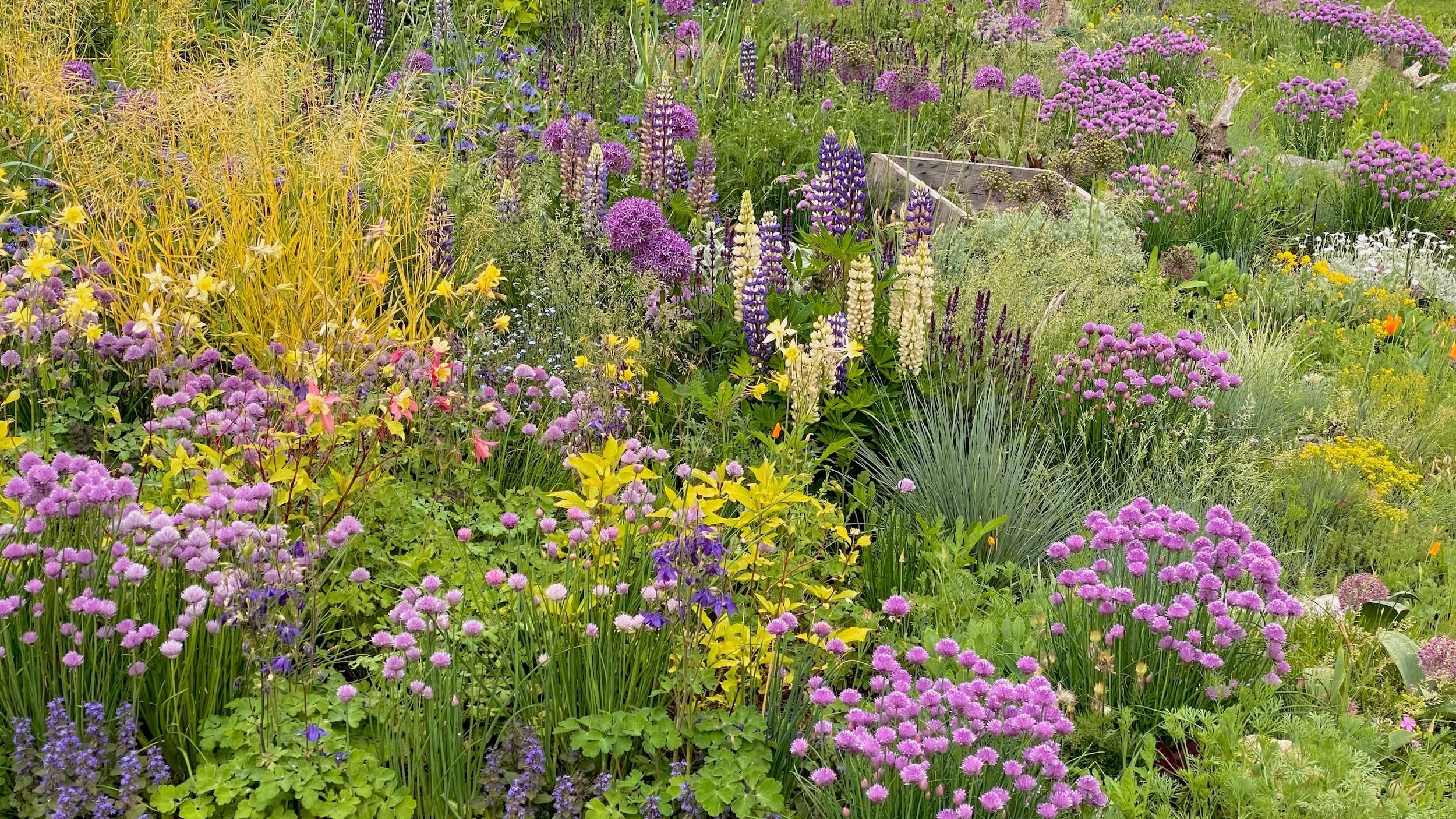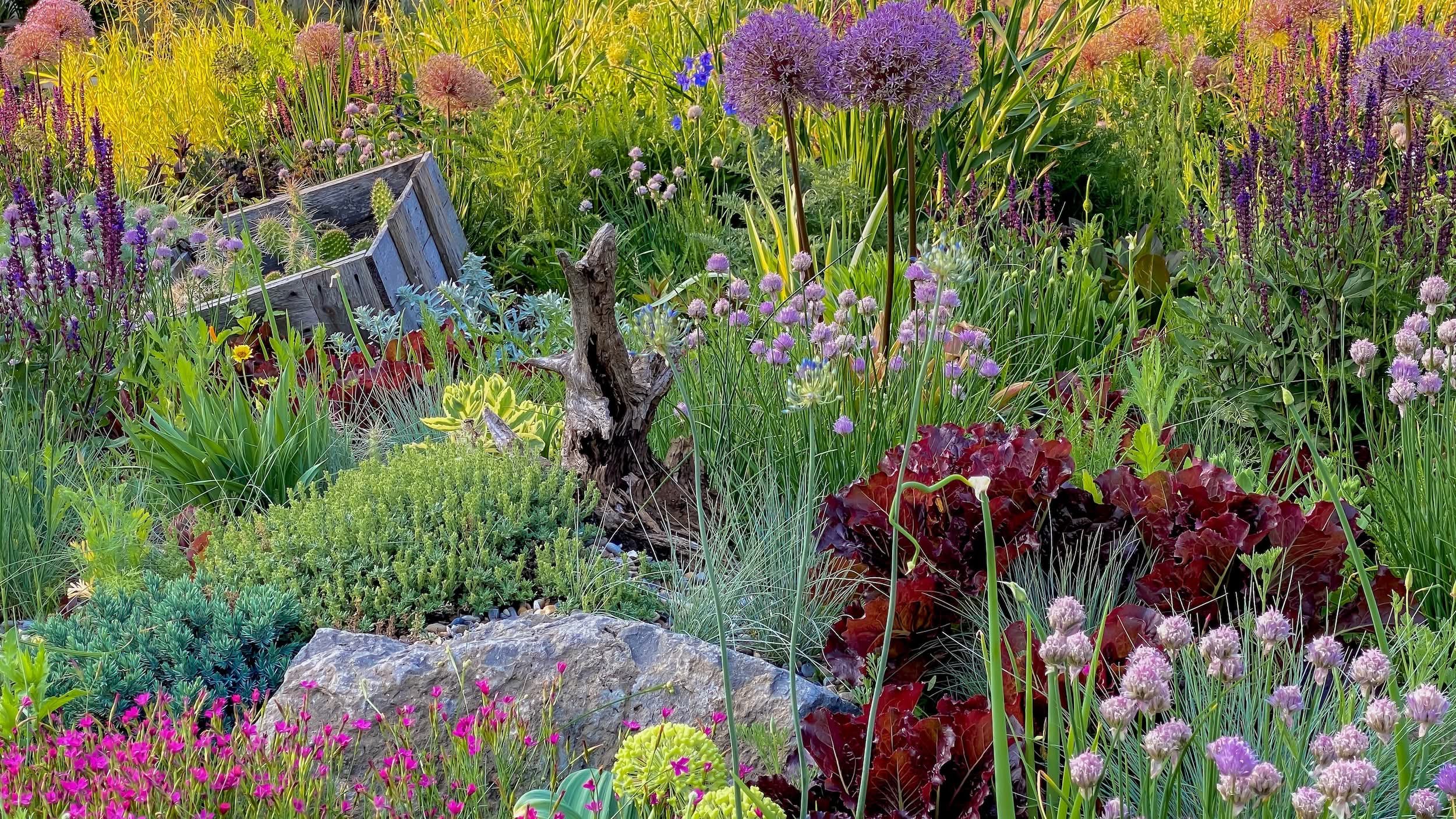
Plantings That Thrive, Not Just Survive
What is Naturalistic Planting Design?
Naturalistic planting design is both an art form and an ecological technology. It brings together the scientific understanding of plant communities with the expressive potential of designed landscapes.
This approach produces immersive, resilient gardens that evolve and deepen with time. Unlike conventional landscaping, which emphasizes control and uniformity, naturalistic planting embraces change, adaptation, and seasonal transformation. By working with ecological processes rather than suppressing them, these gardens become self-sustaining systems that grow more beautiful, functional, and biodiverse each year.
Curious where this movement came from? Explore its history and key designers in The Roots of Naturalistic Planting Design.
What Sets it Apart?
Designed for change, not perfection — Plantings mature and improve over time, rather than fading or needing replacement.
Works with nature, not against it — Design relies on plant interactions, succession, and self-seeding for long-term success.
High-impact, low-intervention — Gardens are abundant while requiring fewer inputs once established.
Seasonal performance — Continuous layers of colour, texture, and movement replace short-lived floral displays.
10 Key Shifts in Naturalistic Planting Design
Naturalistic planting offers a new way of thinking about gardens. Instead of controlling every detail, it works with ecological processes to create beauty, structure, and resilience. These 10 paradigm shifts explain how this approach differs from conventional landscaping — and what it means for long-term care, biodiversity, and climate adaptability.
-
From Individual Plants → To Interwoven, Self-Sustaining Communities
Traditional Approach: Plants are treated as isolated objects, arranged for aesthetic effect.
Naturalistic Approach: Plants are selected for their ecological roles and planted as dynamic, interwoven communities.
Stewardship Implication: Prioritize managing relationships within plant communities, rather than the isolated care of individual plants.
-
From Single-Layer Beds → To Multi-Tiered Plantings That Self-Regulate
Traditional Approach: Landscapes often rely on single-layer plantings, such as neat rows or clipped shrubs, leaving exposed soil.
Naturalistic Approach: Multiple layers of ground-covers, structure plants, and seasonal performers, work together to improve soil, reduce weeds, and stabilize the ecosystem.
Stewardship Implication: Reduce weeding, mulching, and replanting.
-
From Static Composition → To Dynamic, High-Performance Planting
Traditional Approach: Gardens are installed as fixed arrangements that require upkeep to retain their original look.
Naturalistic Approach: Plantings are dynamic; short-lived pioneers give way to longer-lived species as part of an intentional succession.
Stewardship Implication: Guide succession through selective thinning, timely edits, and allowing self-seeding, rather than replanting entire beds.
-
From Artificial Maintenance → To Plantings That Work With Nature
Traditional Approach: Aesthetics are maintained through fertilizer, irrigation, and pesticide use.
Naturalistic Approach: Site-adapted plants reduce dependence on artificial inputs while improving ecological performance.
Stewardship Implication: Observe and support natural processes rather than continually correcting problems.
-
From Static Maintenance → To Flexible, Adaptive Planting
Traditional Approach: Landscape maintenance aims to keep everything the same, treating change as failure.
Naturalistic Approach: Stability comes from dynamic processes; plants coexist while adjusting to environmental factors.
Stewardship Implication: Facilitate the garden’s health and structure with small seasonal edits, not rigid maintenance.
-
From Fixed Landscapes → To Responsive, Intentional Management
Traditional Approach: A fixed state is enforced through regimented maintenance.
Naturalistic Approach: Management is a dynamic process that considers plant life cycles, competition, and succession, to guide the planting’s development.
Stewardship Implication: Time interventions to maximize ecological and aesthetic benefits, such as spring cut-backs that preserve winter interest.
-
From Human Control → To Plantings That Govern Themselves
Traditional Approach: Landscapes depend on human control to maintain order.
Naturalistic Approach: Ecological processes like competition, decay, and self-seeding are embraced to stabilize the system.
Stewardship Implication: Allow beneficial processes to unfold by reducing unnecessary removals and suppressions.
-
From Aesthetic Choices → To Plants Adapted for Function and Site Conditions
Traditional Approach: Plants are chosen primarily for visual appeal.
Naturalistic Approach: Selections are based on adaptability, resilience, function, and beauty.
Stewardship Implication: Choose the right plants for the right roles to reduce future intervention and improve garden longevity.
-
From Instant Visuals → To Ever-Changing Beauty That Matures Over Time
Traditional Approach: Focus is placed on quick, showy results which are often short-lived and labour-intensive.
Naturalistic Approach: Design emphasizes seed heads, structure, and seasonal dynamics to provide evolving, year-round beauty.
Stewardship Implication: Make space to linger on the ever-changing behaviour and beauty of plant communities throughout the seasons and the years.
-
From Disturbance as a Problem → To Using It as a Tool for Regeneration
Traditional Approach: Disturbances (e.g., abrupt changes in available light, soil disruptions, animal grazing) are considered adverse events in need of remediation.
Naturalistic Approach: Disturbance is used as a regenerative force — thinning, cutting, soil shifts, and the introduction of new species help plantings evolve.
Stewardship Implication: Accept and apply small disturbances to re-invigorate, not reset, the garden.
Why This Matters in Alberta
While naturalistic planting design is well-established in parts of Europe and North America, it remains relatively new to Alberta. Designers like Piet Oudolf, Nigel Dunnett, and Noel Kingsbury have helped pioneer this approach, but its adoption is still emerging here.
Alberta is also a useful case study. If plant-community design can thrive in a climate defined by freeze-thaw cycles and temperature extremes, it can be adapted almost anywhere.
Naturalistic planting design has great potential in Alberta because it offers:
Climate Resilience — Plantings thrive in Alberta’s harsh freeze-thaw cycles and temperature extremes.
Biodiversity Benefits — It provides essential habitat and forage for native pollinators and wildlife.
Aesthetic and Functional Shifts — Designs move beyond lawns and rigid beds toward layered, expressive, and immersive spaces.
Naturalistic planting offers a bold, adaptable alternative that aligns with Alberta’s unique conditions and emerging garden culture.
Naturalistic Planting Myths
-
No — it’s a precise design process.
Every plant is chosen for its role in a resilient, self-sustaining system. This approach is designed, not wild. Intentional choices are made about structure, sequence, and composition.
-
No — it’s thoughtfully composed.
Naturalistic planting uses repetition, rhythm, and layering to create coherence. Focal points, composed vistas, and formal elements provide structure. The result is immersive beauty that evolves, not chaos.
-
No — once established, it thrives with less intervention.
By selecting adaptable, competitive plants and embracing natural processes like self-seeding and plant succession, these gardens require less hands-on upkeep over time.
-
No — it’s scalable.
The same design principles apply, whether in a tiny courtyard or a public park — use the right plants, create layers, and allow the garden to evolve.
-
No — Alberta supports a wide range of resilient plants.
With the right palette and design strategy, naturalistic planting performs beautifully in Alberta’s unique climate, handling drought, freeze-thaw cycles, and temperature swings, more effectively than conventional landscaping.
-
No — naturalistic planting is designed nature, not wild nature.
Naturalistic planting incorporates both native and introduced species to maximize ecological function and aesthetic harmony. Many non-native species support invertebrates, birds, and mammals — especially when densely planted with thoughtful structure. Ecological value comes from how plants function in a system: their ability to coexist, build habitat, and respond to place.
-
No — a well designed planting integrates both.
Ecological gardens can be structured, elegant, and emotionally resonant. Function and beauty are not at odds. When designed with intent, gardens can support wildlife and soil health, while offering rich texture, vibrant colour, and strong visual form. Ecological health depends more on plant density, layering, and taxonomic diversity. Done right, a naturalistic garden is both a habitat and a work of art.
Naturalistic Planting in Action
This approach is more than a technique. It’s a different way to experience a landscape. To see what this looks like in real gardens, explore the Studio’s portfolio.

Subscribe to Field Notes
Access Rooted in Design, our monthly reflections on planting and garden design.
When you sign up, you’ll also receive Designing for Depth — a 26-page guide to thinking, feeling, and planning like a planting designer, so you can create gardens that are resilient, layered, and alive.





